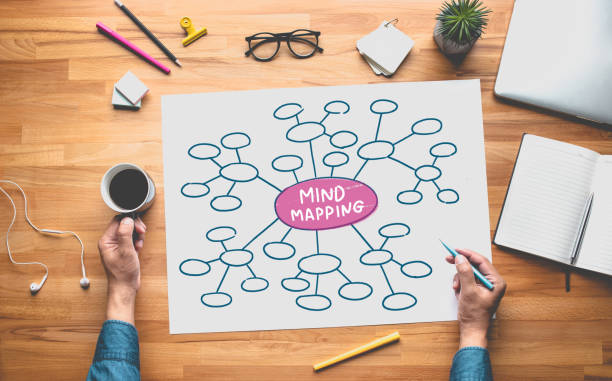Have you ever thought about using a mind map to organize your thoughts and brainstorm your ideas? Well, it’s rare that everybody is an organized thinker, but there’s some evidence to find that using a family mind map can help you with your everyday goals- even make them seem a little more achievable!
What is a Mind Map?
Mind mapping is a versatile tool that can be used to make goals, organize information, and brainstorm solutions. In simple terms, a mind map is a visual representation of an idea or concept. You can create a mind map using any drawing or visualization software, or you can create one on paper.
Benefits of a Mind Map for Goal Setting
A mind map can be thought of as a visual representation of information. When you create one, you are creating a “picture” in your head of all the different pieces of information that are related to your goal. Let’s take a look at some of the benefits of using a mind map to set and achieve goals:
- It’s Visual: A mind map is visual, which makes it easy for you to remember and access information.
- It’s Flexible: Mind maps are flexible and can be adapted to reflect your own preferences or the details of your goal.
- It’s Collaborative: Mind maps are collaborative, which means that everyone involved in setting or achieving the goal can use it to make sure they’re all on the same page.
- It Encourages Creative Thinking: When you use a mind map to think about your goal, it encourages creative thinking and problem-solving skills.
How to Start a Mind Map?
There’s a lot of talk these days about “mind maps” – the powerful visual tool that can help you take conscious control of your thoughts and organize information like never before. Mind mapping is all the rage in business, education, and personal productivity circles, and for good reason: it works. Here are four easy tips for getting started with mind mapping:
- Make a list of your goals. By starting with an already-organized list, you’ll be more likely to get creative with your mind map structure.
- Start with Headings. Start by creating headings for each goal you have: What are the main elements of this goal? For example, in the goal of studying for a test, you might include topics covered on the exam, steps to studying well, etc.
- Connect Your Headings. Once you have your headings set up, start brainstorming ways to connect them by drawing lines between them. This will help you see how each element contributes to your ultimate goal.
- Add Supporting Details and Images. If necessary, add supporting details and images to help visualize your ideas more clearly. Mind mapping is all about making connections between things –
There’s something about mind mapping that just makes it so powerful. It can be used in all facets of our lives, from making goals to organizing our thoughts and memories. But what are the specific benefits of using a mind map to achieve success? In this post, we’ll outline some of the key reasons why using a mind map can help you achieve your goals faster and easier.
Conclusion
If you’re struggling to make and stick to goals, why not try mind mapping? A study published in the ” journal of Applied Cognitive Psychology” found that people were more likely to keep goals if they were mapped out on a flow chart or matrix.effective ways for individuals to map their goals may be summarized as follows:
-Planning: Individuals should develop a plan for achieving their goal before beginning the mapping process. Make sure that your goal is specific, measurable, achievable, relevant and timelier.
-Enabling structures: Make sure there are enabling structures in your life that will help you achieve your goal. This could include setting realistic deadlines, creating supportive relationships, making important decisions, etc.
-Focusing on positive reinforcement: Try focusing on positive reinforcement when you’re achieving your goals. This means rewarding yourself after each step you make towards your goal rather than beating yourself up when you fall short。
-Challenging yourself: Mapping the goal out can be helpful, but it’s still important to challenge yourself periodically by taking on new tasks or conditions associated with the goal. This can help prevent complacency from setting in.












